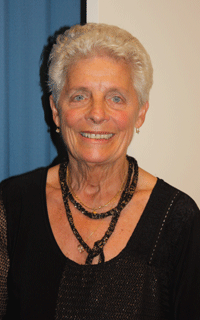
 Edward MacLysaght (1887-1986) was a leading authority on Irish names and family history. He served as Chief Herald and Genealogical Officer for the Irish Office of Arms. He was also Keeper of Manuscripts at the National Library of Ireland and was Chairman of the Manuscripts Commission. His major work Irish Families : Their Names, Arms and Origins, with 27 full-colour plates depicting 243 family arms, is in its fourth edition. The sixth edition of his book The Surnames of Ireland explains that Ireland was one of the earliest countries to evolve a system of hereditary surnames : they came into being fairly generally in the eleventh century and a few were formed even before the year 1000.
Edward MacLysaght (1887-1986) was a leading authority on Irish names and family history. He served as Chief Herald and Genealogical Officer for the Irish Office of Arms. He was also Keeper of Manuscripts at the National Library of Ireland and was Chairman of the Manuscripts Commission. His major work Irish Families : Their Names, Arms and Origins, with 27 full-colour plates depicting 243 family arms, is in its fourth edition. The sixth edition of his book The Surnames of Ireland explains that Ireland was one of the earliest countries to evolve a system of hereditary surnames : they came into being fairly generally in the eleventh century and a few were formed even before the year 1000.
The traditional belief that the system was introduced deliberately by Brian Boru (c.946-1014), one of the most significant figures of the eleventh century, is without foundation : it developed spontaneously in Ireland, as elsewhere, as the population increased and the former practice first of single names and then of ephemeral patronymics or agnomina of the nickname type proved insufficiently definitive.
Heraldry and Arms
Derived from old French Herault, of German origin, the herald was an officer whose duty it was to proclaim war or peace or carry challenges to battle and messages between sovereigns. Heralds had their attendants called pursuivants. Nowadays war or peace is still proclaimed by heralds, but their chief duty as court functionaries is to superintend state ceremonies such as coronations and installations of knights, and also to grant arms, trace genealogies, attend to matters of precedence, honours and the like.
Heraldry is defined as a system of patterns and pictures, or devices, on shields originally used to identify individuals when wearing armour. The terminology of heraldry reveals the science’s French origins. These coats of arms became hereditary in Europe in the early twelfth century. They were also used as seals, an impressed device, in wax, lead or something similar. In England heraldry is controlled by the College of Arms. The Court of the Lord Lyon has a similar function in Scotland.
The shield bears the heraldic signs or charges ; from these heralds one can determine the genealogy of the bearer. Heraldry was a term originally applied to the science and function of a herald but now is more restricted to the knowledge or science of armorial bearings, formerly known as Armory. The language of heraldry contains many technical terms and a huge number of symbols. In heraldry, punning on names and words is called ‘canting’. It makes a visual punning reference to the surname or title of its owner.
The English College of Heralds was incorporated by Richard III, King of England in 1483-85. It consists of three Kings of Arms, six Heralds and four Pursuivants, under the Earl Marshal, a hereditary office in the line of dukes of Norfolk, oldest of the noble dukedoms created in 1483.
A Coat of Arms
A Coat of Arms comprises the Shield, Helmet, Crest, with a mangling or stylised drapery behind the shield, a wreath and a motto. The essential part is the Shield without which there cannot be a coat of arms, the crest is merely an addition made later on and it is not used by every family. The motto is not strictly part of the coat of arms or armorial achievement.
In early times the crest on the helmet was the emblem that served when the banner was rent asunder, and the shield broken, as a rallying point for the knight’s followers. Mottoes were adopted as the memorial of some noble action, a memorable war cry, or a record of some ancient descent which has been handed down from sire to son. Families have sometimes changed their motto hence the reason for different mottoes on family branches.
In the ages when most people could not read, the decoration of shields was the only method of identification and distinction. Man showed imagination in the choice of devices adopted such as the lion characterising strength or valour, or figures forming a play on their names, and many adopted a religious symbol. Many of the devices were drawn from animal life or the heavens, such the moon, sun and stars, or fantastic monsters and weird creatures were depicted. The origin of many changes was lost in the times when no writer had thought of making records of such meanings.
Descendants over many generations are proud to display A Coat of Arms as a colourful representation of knights of old, the tournaments and feats of outstanding bravery of their ancient ancestors.
Ita Marguet
Note : Acknowledgement is given to encyclopedic and other sources used in this text.



